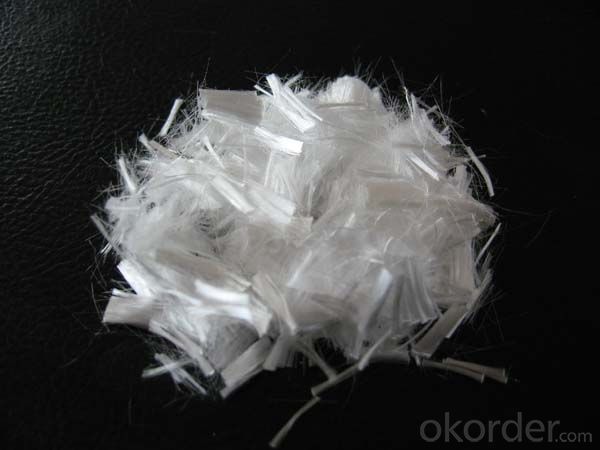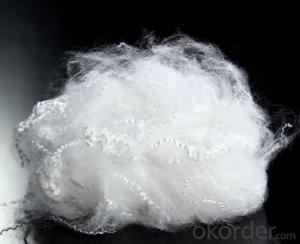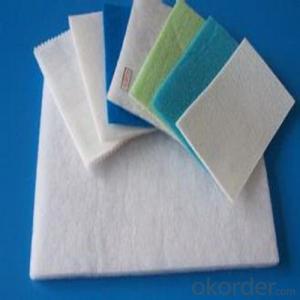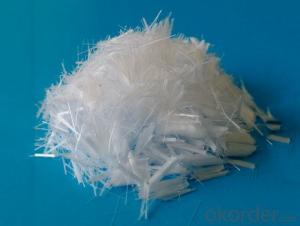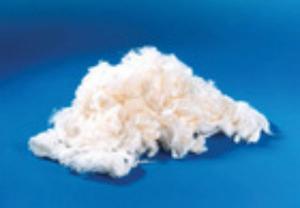Polypropylene Enginnering Fiber for Construction
- Loading Port:
- China main port
- Payment Terms:
- TT OR LC
- Min Order Qty:
- 1 m.t.
- Supply Capability:
- 3000 m.t./month
OKorder Service Pledge
OKorder Financial Service
You Might Also Like
Technical Data of PP Fiber for Concrete
Material | Polypropylene | Type of fiber | Bunchy single fiber |
Density | 0.91 | Anti-pulling strength | >450Mpa |
Anti acid and alkali | Extremely strong | Elasticity modulus | >3.5Gpa |
Melting Point | >165℃ | Diameter | 18-48um |
Safety | Good | Water absorption | without |
Thermal Conductance | Extremely bad | Stretching limitation | >15% |
Low temperatureresistance | high | Specification | 3/6/9/19mm |
Function of PP Fiber for Concrete
Crack resistance of concrete
To improve concrete impermeability
To improve freeze-thaw resistance of concrete
Improve impact resistance and toughness of concrete
To improve the durability of concrete
Application of PP Fiber for Concrete
PP fiber for building can enhance the crack resistance, anti-permeability, anti-abrasion performance, frost-resistance, antiknock and workability of mortar and concrete. Due to the uniform distribution of tens of thousands of fibers in the mortar and concrete, keeping the whole structure strong, avoiding the structure being struck to pieces, preventing the steel from corroding, lengthening the service life of the project and reducing the maintaining cost.
Package of PP Fiber for Concrete
common 0.9 or 1kg per bag. Maybe modified with customer’s requirements.
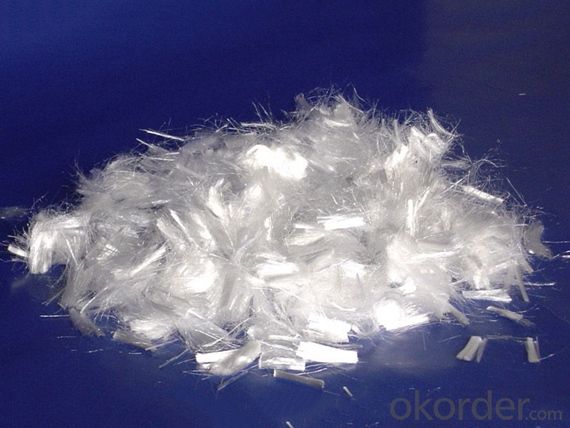

- Q: The difference between polyester fabric and polyester fabric. That kind?
- Polyester fiber synthetic fiber polyester (polyester fibre) by organic acid and diol which is prepared by spinning the. A large number of industrially produced polyester fibers are made from polyethylene terephthalate, a Chinese product called polyester. It is the largest variety of synthetic fiber at present.Polyester is polyester fiber, translation is different
- Q: What do you mean by "T300 T700" in carbon fiber?
- Carbon fiber (carbon fiber, referred to as CF) is a new kind of fiber material with high strength and high modulus fiber with carbon content of more than 95%.
- Q: What are the differences between silk, yarn and fiber three? Where are the differences between decorative fabrics and clothing fabrics?
- Depending on the use of different. Most of them are made of yarn or silk. Most of the lines are used for sewing or other industrial / agricultural / military purposes.There are exceptions to all fiber: non-woven fabrics made from fibers are similar to paper making techniques.
- Q: What material is microfiber shoe?
- Superfine fiber is widely used: use it as a fabric, the sand washing, sanding and other advanced finishing surface to form a layer of similar peach skin hair appearance, and extremely loose and soft, smooth, made of this fabric, high-grade fashion jacket, T-shirt, underwear, and other cool and comfortable skirt sweat, stickless, full of youthful beauty; foreign made with microfiber senior suede, both like leather appearance, texture, style, and low price; the superfine fiber thin and soft, use it to make an excellent decontamination effect can wipe clean cloth, all kinds of glasses, video equipment, precision the instrument, on the mirror without damage; using superfine fiber can be made into a super high density fabric surface is very smooth, used for skiing, skating, swimming and other sports clothing can reduce the resistance, help the athletes to create a good performance; in addition Superfine fiber can also be used in many fields such as filtration, medical treatment, labor protection and so on.
- Q: Which is good, MDF or particleboard? Why?
- [] the whole board density board properties is the same, its plasticity is good, can fingerskrouters various linear, but the density of plate bonding force between layers is relatively poor, the end of the play when drilling, easy to crack layer
- Q: Is Chiffon the same as polyester?
- DissimilarityPolyester fiber is raw material, chiffon is fabric, that is, chiffon can be made of polyester (polyester)
- Q: What are environmentally friendly fibers?
- Chitin fibers were originally H. Braconnot, Professor, obtained from mushrooms fiber, and this fiber from mushroom is called Fungine, which means fungal cellulose. In 1823, another French scientist, A. Odier, isolated the same substance from the wings of crustacean insects. He thought the substance was a new type of cellulose, which was named Chitin. In 1843, A. Payen of France found that Chitin was not quite the same as cellulose. In the same year, the French J. L. Lassaigne found that Chitin contained nitrogen, which proved that Chitin is not cellulose, but a new, fibrous compound.
- Q: What are the new fibers?
- The natural growth of non white cotton, China began to introduce and cultivation of cotton in 1994, now has a brown, green, purple, grey, orange and other color varieties, usually blended with white cotton, synthetic fiber, process without dyeing, is the true meaning of the green fiber, its length and strength slightly in white cotton.
- Q: Comparison of bamboo fiber reinforced flooring with wood fiber reinforced flooring
- Bamboo flooring is not a new product, our country at the end of 80s has been patched by the bamboo viscose, with high temperature and high pressure and. There are 2 main ways in the bamboo floor structure arrangement, namely flat type, vertical type, the 2 structures are the bending direction of bamboo "back to back" arrangement, the use of bamboo their own balance in different environment of the contraction expansion rate flexibility to. The theoretical service life of bamboo flooring can be up to 20 years, and the correct use and maintenance is the key to prolonging the service life of bamboo flooring.
- Q: Which is better, polyester fiber or silk?
- Of course it is silk, silk is very comfortable; polyester fiber is not as good as silk, and once the temperature is high, it will produce harmful substances, harm the body
Send your message to us
Polypropylene Enginnering Fiber for Construction
- Loading Port:
- China main port
- Payment Terms:
- TT OR LC
- Min Order Qty:
- 1 m.t.
- Supply Capability:
- 3000 m.t./month
OKorder Service Pledge
OKorder Financial Service
Similar products
Hot products
Hot Searches
Related keywords







